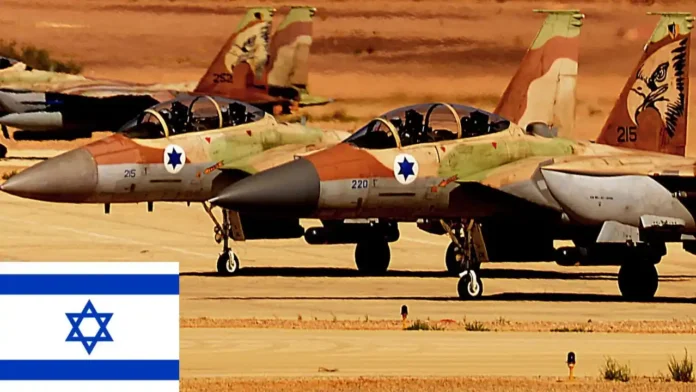In a dramatic escalation of tensions in the Middle East, Israel launched a series of airstrikes on military targets in Iran, utilizing its most advanced fighter jets and precision missiles.
The operation, dubbed “Operation Days of Repentance,” involved three waves of coordinated attacks aimed at crippling Iran’s missile and drone capabilities.
The strikes came in response to a barrage of nearly 200 ballistic missiles fired by Iran towards Israel on October 1, which was itself a retaliation for the killing of Hezbollah and Hamas leaders.
The Israeli Air Force deployed a formidable array of aircraft for the operation, including the fifth-generation F-35 Adir fighter jets, F-15I Ra’am ground attack jets, and F-16I Sufa air defense jets.
The planes flew approximately 2,000 kilometers to reach their targets, striking with ‘Rampage’ long-range, supersonic missiles and ‘Rocks’ extended stand-off air-to-surface missiles.
A total of 100 fighter jets participated in the strikes, which were divided into three distinct waves. The first wave targeted radar and air defense installations to disable Iran’s early warning capabilities, clearing the way for the subsequent strikes.
c.
Each wave consisted of 25-30 jets, with 10 executing missile strikes while the remainder provided air cover and diversion. The airstrikes avoided Iran’s nuclear facilities and oil infrastructure, likely to prevent the situation from spiraling into a broader regional conflict.
Despite this, the attacks prompted a strong defensive response from Iran. Iranian officials reported that the nation’s air defenses had countered the Israeli strikes in the provinces of Tehran, Khuzestan, and Ilam, claiming that damage was “limited” to a few military installations.
Following the attacks, Iran and neighboring Iraq closed their respective airspace, reflecting heightened security concerns.
The military action followed days of anticipation as the region braced for Israel’s retaliation. Initially, the operation was delayed due to weather conditions, as Israel’s precision-guided missiles, equipped with camera seekers, required clear skies to ensure accuracy.
Once conditions improved, Israel swiftly launched the strikes, reportedly with the support of U.S. intelligence and monitoring capabilities.
Israel’s operation comes amid an already tense situation in the Middle East, with fears of further escalation following Iran’s earlier missile barrage.
Israeli and American air defense systems were placed on high alert during the operation to intercept any potential retaliatory strikes by Iran.
The current conflict underscores the deepening hostilities between the two nations, with both sides displaying a readiness for military engagement.
As of now, the long-term implications of the strikes remain uncertain. The international community is watching closely to see if the situation will escalate further, potentially drawing in other regional actors or leading to direct military confrontations.
For now, both nations appear to be gauging each other’s responses as they navigate the fallout from Israel’s latest military action.

